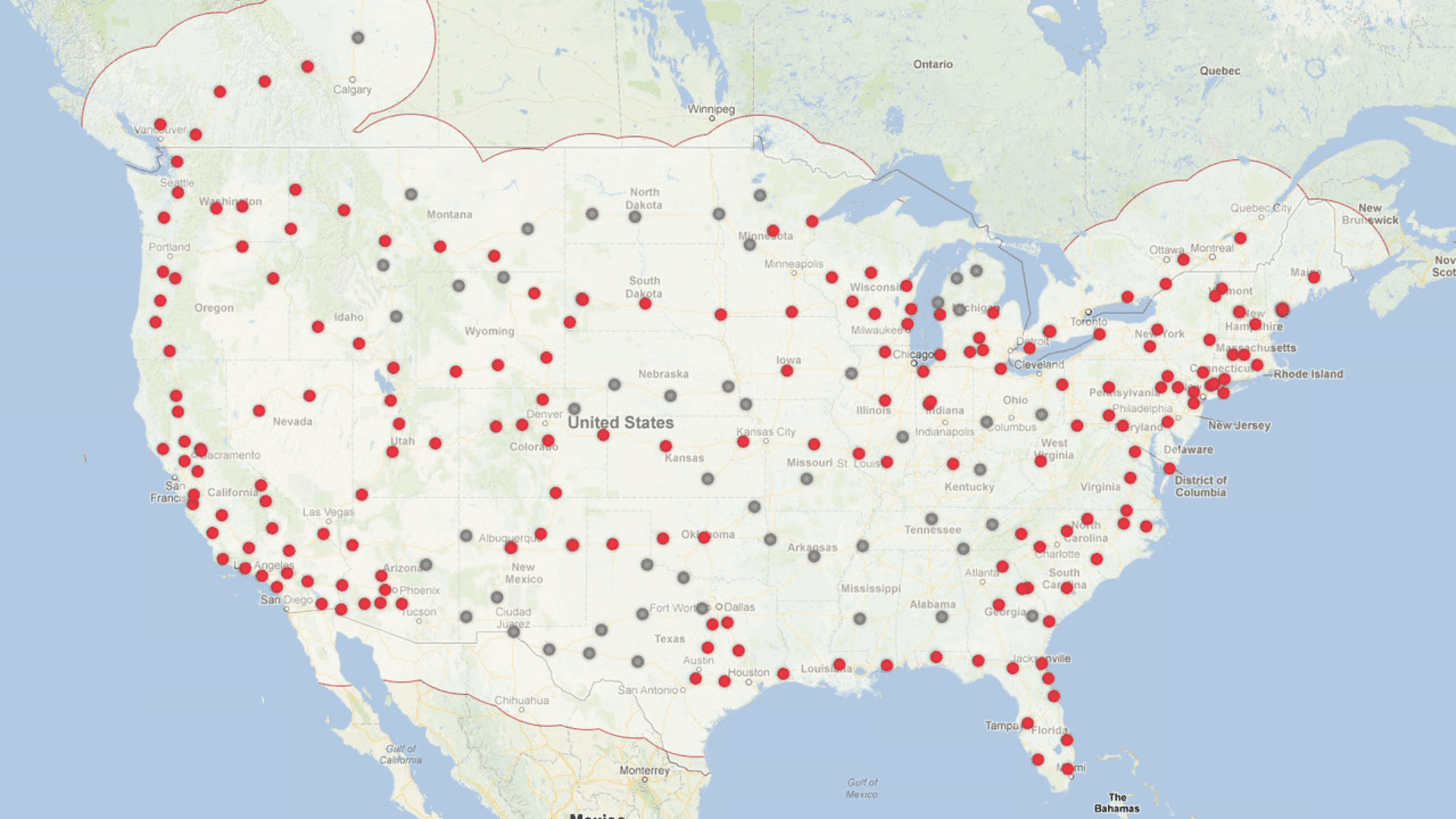- Dec 18, 2013
- 136,356
- 27,905
- 2,180
The driving distance between Los Angeles and New York is 2,778 mi - about 1 day 17 hours.Who cares, can someone go cross country yet?
Easily done.
Provided one has not just the money to buy one of those spendy toys but also enough left over for one Hell of an extension cord. No, not one long enough to run coast to coast - just from one FREE FUEL depot to the next. Should never be more than about 600 miles.
Map of Tesla Supercharger network:

Once again you prove to be ignorant. And by the way, Tesla vehicles have already been driven across country. Multiple times. Here is another example:
Tesla makes record-setting cross-country trip - Chicago Tribune
These folks made the trip in 76.5 hours. Not only that, they drove during the winter. "The Tesla route took them through a sandstorm in Utah, subzero temperatures in South Dakota, blizzards in Colorado, Wisconsin and Illinois, and general winter conditions in what has been considered one of the rougher winters in recent history."
And what was the time it took and distance traveled to complete the first cross country trip?
The Tesla team of 15 people in two Model S, a balky sleeper van, and another swag wagon traversed 3,464.5 miles in 76.5 hours via a wormlike pattern of superchargers that connect the spaces between major cities.
An extra 700 miles and 35.5 hours. So why is that, because the charger stations are not in place to directly drive cross country. In fact the trip you note is one made by the manufacturer. Now, tell us how convenient it is for someone to drive cross country?
It took ~8 hours total time to charge the car during the trip from at least 13 stops at 265 miles per charge as advertized.



 Here, guy is spiking the football bragging about an EV that takes weeks to go across country!! My 310hp '03 Mustang can do it in two days and it doesn't sound like ass.
Here, guy is spiking the football bragging about an EV that takes weeks to go across country!! My 310hp '03 Mustang can do it in two days and it doesn't sound like ass. The social oddball types......they don't even know people are laughing at them.
The social oddball types......they don't even know people are laughing at them.



